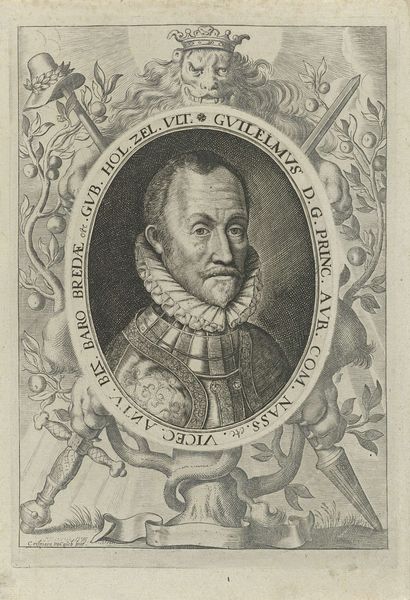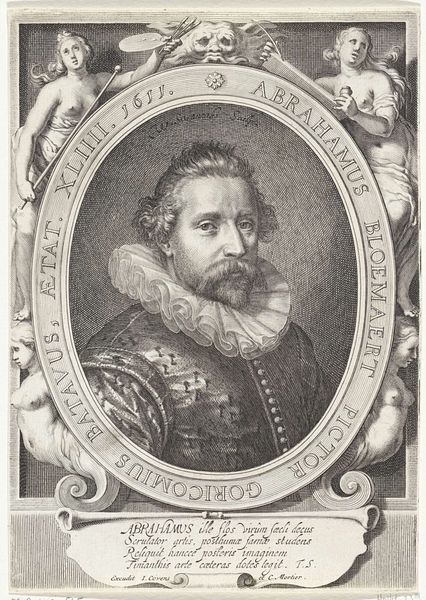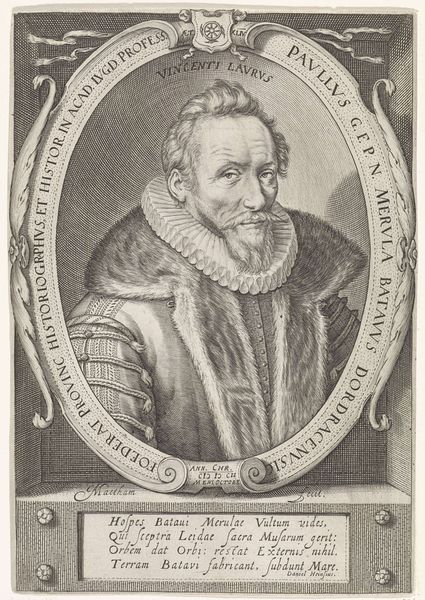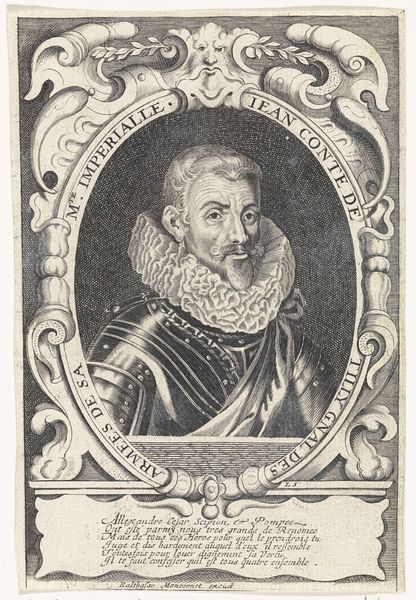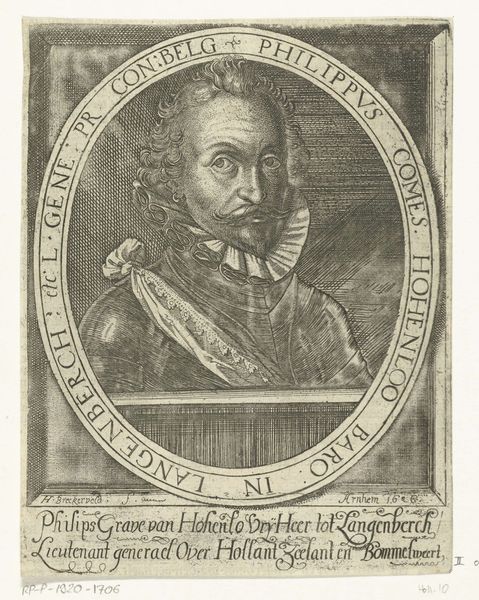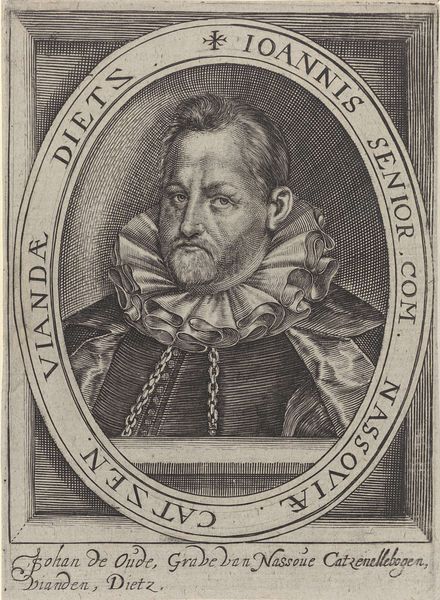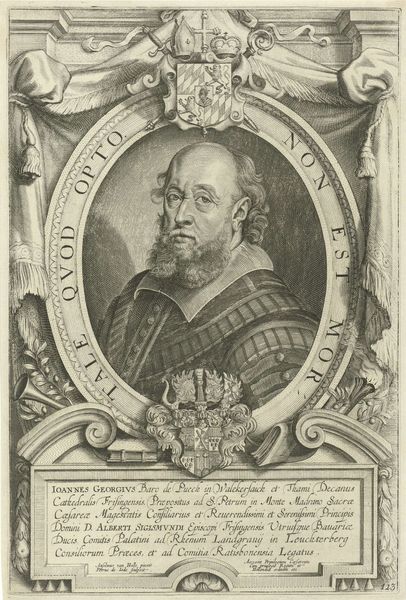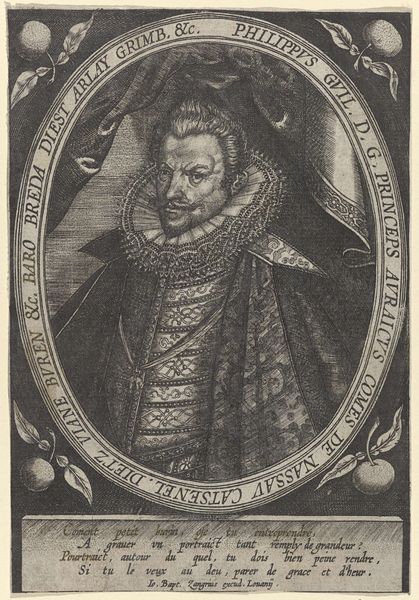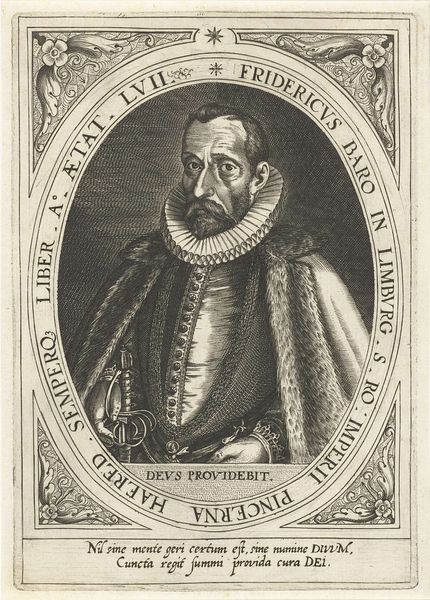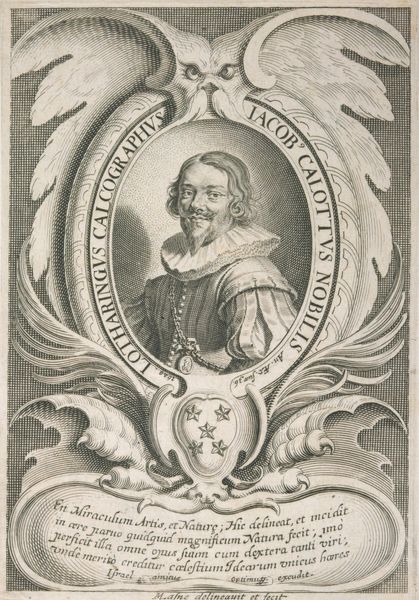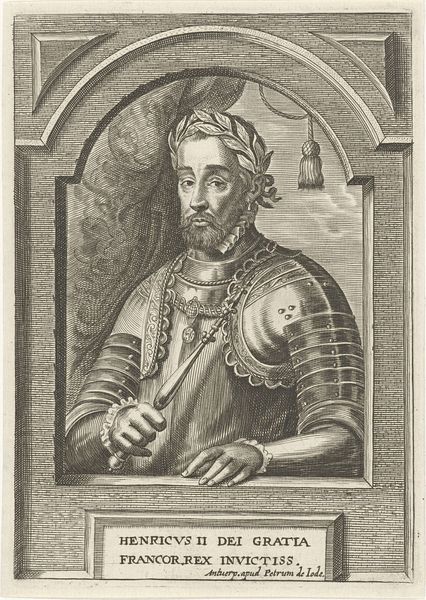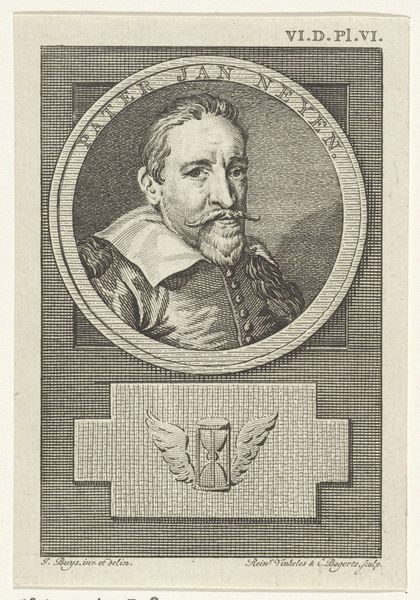
print, engraving
#
portrait
#
baroque
#
dutch-golden-age
# print
#
pen illustration
#
old engraving style
#
caricature
#
pen work
#
engraving
Dimensions: height 249 mm, width 158 mm
Copyright: Rijks Museum: Open Domain
This portrait of Willem I, Prince of Orange, was made by Crispijn van den Queborn, probably in the early 17th century, using the technique of engraving. The image is made entirely from lines incised into a metal plate, which would then be inked and printed. Look closely, and you can see how Queborn varied the density of the lines to create areas of tone and shadow. This was skilled, time-consuming work, demanding both precision and artistic judgement. The print medium itself, of course, was tied to wider social issues of labor, politics, and consumption. The proliferation of printed images coincided with the rise of a mercantile class in the Netherlands, and the increasing availability of books and other printed matter. Engraving was a reproductive technique, which meant that images could be widely disseminated. In this case, the portrait of Willem I would have served to promote his image, and to cement his place in the history of the Dutch Republic. Understanding the materials, making and context is key to understanding the full meaning of an artwork.
Comments
No comments
Be the first to comment and join the conversation on the ultimate creative platform.
